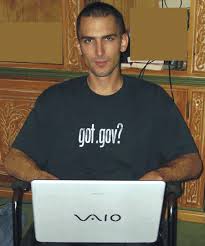
What is hacking?
The act of identifying and exploiting system and network vulnerabilities in order to gain unauthorized access to those systems is known as computer hacking. Hacking is not always malicious. White hat hackers may work in cybersecurity or as software engineers and testers, looking for and fixing vulnerabilities. Black hat hackers are malicious in their intentions. However, a large gray area exists, populated by political activists and hackers who wear both hats.
Every year, hackers cost businesses and consumers trillions of dollars. According to CPO Magazine, hacking attacks will cost a total of $6 trillion by 2021, an increase from the $2 trillion in losses reported in 2019. Much of the cybercrime problem stems from the same internet features that we all enjoy. Even the most inexperienced hacker can easily find all the tools they require online for free.
The hacker assault did not happen overnight. It took decades for now-famous hackers to discover critical vulnerabilities and expose the strategies that laid the groundwork for the internet and its free-for-all libertarianism. Here are the top ten most infamous hackers of all time.
1. Kevin Mitnick
Kevin Mitnick, a seminal figure in American hacking, began his career as a teen. He was charged with stealing computer manuals from Pacific Bell in 1981. He hacked the North American Defense Command (NORAD) in 1982, which inspired the 1983 film War Games. In 1989, he hacked into the network of Digital Equipment Corporation (DEC) and copied their software. This act put kevin on the map because DEC was a leading computer manufacturer at the time. He was later arrested, convicted, and imprisoned. He hacked Pacific Bell's voicemail systems while on conditional release.
Kevin never used the access and data he obtained during his hacking career. It is widely assumed that he once gained complete control of Pacific Bell's network simply to demonstrate that it could be done. A warrant was issued for kevin's arrest in connection with the Pacific Bell incident, but he fled and went into hiding for more than two years. When he was apprehended, he was sentenced to prison on multiple counts of wire fraud and computer fraud.
Although kevin eventually wore a white hat, he may fall into the gray area of wearing both hats. According to Wired, he started "kevin's Absolute Zero-Day Exploit Exchange" in 2014, which sells unpatched, critical software exploits to the highest bidder.
For know more...
2. Anonymous
Anonymous began in 2003 on the 4chan message boards in an unnamed forum. The group is disorganized and loosely focused on the concept of social justice. For example, in 2008, the group took issue with the Church of Scientology and began disabling their websites, lowering their Google search rankings and overloading their fax machines with all-black images. A group of "Anons" marched through Scientology centers around the world in March 2008, wearing the now-famous Guy Fawkes mask. According to The New Yorker, while the FBI and other law enforcement agencies have tracked down some of the group's more prolific members, the lack of any real hierarchy makes identifying or eliminating Anonymous as a whole nearly impossible.
For know more...
3. Adrian Lamo
Adrian Lamo, then 20, used an unprotected content management tool at Yahoo in 2001 to modify a Reuters article and insert a false quote attributed to former Attorney General John Ashcroft. Adrian frequently hacked into systems and then informed both the press and his victims. In some cases, he would assist in cleaning up the mess to improve their security. However, as Wired points out, Adrian overreached in 2002 when he hacked The New York Times' intranet, added himself to the list of expert sources, and began conducting research on high-profile public figures. Adrian was dubbed "The Homeless Hacker" because he preferred to roam the streets with nothing more than a backpack and frequently had no fixed address.
For know more...
4. Albert Gonzalez
Gonzalez, dubbed "soupnazi" by the New York Daily News, began his career as the "troubled pack leader of computer nerds" at his Miami high school. He eventually became involved with the criminal commerce site Shadowcrew.com, where he was regarded as one of its best hackers and moderators. Gonzalez was arrested in New York at the age of 22 for debit card fraud in connection with the theft of data from millions of card accounts. To avoid prison, he became an informant for the Secret Service, ultimately assisting in the indictment of dozens of Shadow crew members.
Gonzalez continued his criminal activities while working as a paid informant. Gonzalez and a group of accomplices stole over 180 million payment card accounts from companies such as OfficeMax, Dave and Buster's, and Boston Market. Gonzalez's 2005 attack on US retailer TJX was the first serial data breach of credit information, according to the New York Times Magazine. This well-known hacker and his team used a simple SQL injection to create back doors in several corporate networks, stealing an estimated $256 million from TJX alone. Gonzalez's human victimization was described as "unparalleled" by the federal prosecutor during his sentencing in 2015.
For know more...
5. Matthew Bevan and Richard Pryce
In 1996, Matthew and Richard led a group of British hackers who breached multiple military networks, including Griffiss Air Force Base, the Defense Information System Agency, and the Korean Atomic Research Institute (KARI). After dumping KARI research onto American military systems, Matthew (Kuji) and Richard (Data stream Cowboy) have been accused of nearly starting a third world war. Matthew claims he was looking to prove a UFO conspiracy theory, and his case is similar to Gary McKinnon's, according to the BBC. Mathew and Richard demonstrated, whether with malicious intent or not, that even military networks are vulnerable.
For know more...
6. Jeanson James Ancheta
Jeanson James Ancheta had no intention of hacking systems for credit card information or crashing networks in order to achieve social justice. Ancheta was more interested in the use of bots, which are software-based robots that can infect and eventually control computer systems. In 2005, he was able to compromise over 400,000 computers by using a series of large-scale "botnets." He then rented these machines to advertising companies and was paid to directly install bots or adware on specific systems, according to Ars Technica. Ancheta received a 57-month prison sentence. This was the first time a hacker was sentenced to prison for using botnet technology.
For know more...
7. Michael Calce
In February 2000, 15-year-old Michael Calce, also known as "Mafia boy," discovered how to hijack university computer networks. He used their combined resources to dethrone Yahoo, the world's largest search engine at the time. Within a week, he'd brought down Dell, eBay, CNN, and Amazon with a distributed-denial-of-service (DDoS) attack that overwhelmed corporate servers and crashed their websites. Calce's wake-up call was perhaps the most shocking for cybercrime investors and internet advocates. Was any online data truly safe if the world's largest websites, worth over $1 billion, could be so easily shut down? It is not an exaggeration to say that the development of cybercrime legislation has risen to the top of the government's priority list as a result of Calce's hack.
For know more...
8. Kevin Poulsen
In 1983, kevin, then 17, hacked into ARPANET, the Pentagon's computer network, under the alias Dark Dante. Despite the fact that he was quickly apprehended, the government decided not to prosecute kevin, who was a minor at the time. Instead, he was given a warning.
Kevin ignored the warning and kept hacking. Kevin hacked a federal computer in 1988 and accessed files pertaining to the Philippines' deposed president, Ferdinand Marcos. Kevin went underground after being apprehended by authorities. Kevin kept himself busy while on the run by hacking government files and revealing secrets. According to his own website, he hacked a radio station contest in 1990 and made himself the 102nd caller, winning a brand-new Porsche, a vacation, and $20,000.
Kevin was arrested shortly after and barred from using a computer for three years. He has since switched to white-hat hacking and journalism, writing for Wired, The Daily Beast, and his own blog Threat Level about cybersecurity and web-related sociopolitical causes. Kevin also collaborated with other leading hackers on various projects promoting social justice and information freedom. Perhaps most notably, he collaborated with Adam Swartz and Jim Dolan to create the open-source software Secure Drop, which was originally known as Dead Drop. Kevin eventually handed over the platform, which allowed journalists and sources to communicate securely, to the Freedom of the Press Foundation.
For know more...
9. Jonathan James

Jonathan James hacked several companies under the alias comrade. According to the New York Times, James's hack into the computers of the United States Department of Defense drew the most attention. Even more remarkable was the fact that James was only 15 years old at the time. In an interview with PC Mag, James admitted that the book The Cuckoo's Egg, which details the 1980s hunt for a computer hacker, inspired him in part. His hacking gave him access to over 3,000 messages from government employees, as well as usernames, passwords, and other sensitive information.
James was arrested in 2000 and sentenced to six months house arrest, as well as a prohibition on recreational computer use. However, a probation violation sentenced him to six months in prison. Jonathan James was found guilty of violating cybercrime laws at the age of 16. TJX, a department store, was hacked in 2007, and many customers' private information was compromised. Despite the lack of evidence, authorities suspect James was involved.
James committed suicide by gunshot in 2008. According to the Daily Mail, he stated in his suicide note, "I have no faith in the 'justice' system." Perhaps my actions today, as well as this letter, will send a clearer message to the public. In any case, I've lost control of the situation, and this is my only way to regain control.
For know more...
10. ASTRA
Unlike the others on this list, this hacker has never been publicly identified. However, according to the Daily Mail, some information about ASTRA has been released. He was apprehended by authorities in 2008, and he was identified as a 58-year-old Greek mathematician at the time. He was said to have been hacking into the D assault Group for nearly a decade. During that time, he stole cutting-edge weaponry software and data, which he then sold to 250 people all over the world. The D assault Group suffered $360 million in losses as a result of his hacking. Nobody knows why his true identity has never been revealed, but the word 'ASTRA' is Sanskrit for 'weapon.'
Some of these top hackers wanted to improve the world, while others wanted to prove UFO theories. Some desired money, while others desired fame. All of these people contributed significantly to the evolution of the internet and cybersecurity.


You must be logged in to post a comment.